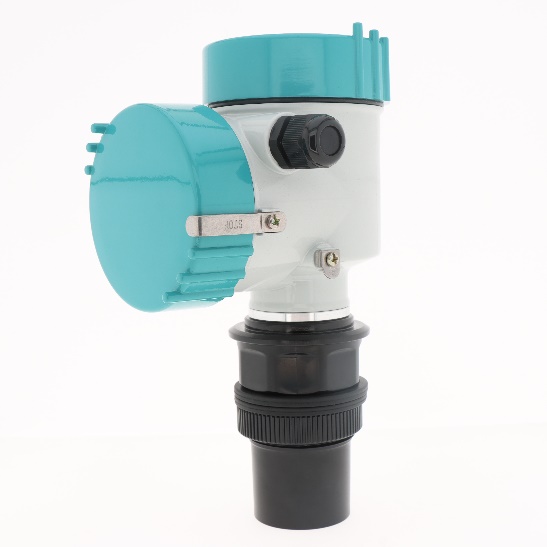Ultrasonic liquid level meter application process and treatment method
2023-12-23
Confirming and analyzing the field environment and working condition of the ultrasonic level meter is a key step to ensure the normal operation and accurate measurement of the equipment. The following is a detailed confirmation of the site environment and working conditions and a summary of possible causes of failure:

Instrument specification model:
Confirm matters: Determine the specifications and models of ultrasonic level meters, including power supply form and range.
Possible cause of failure: Instrument specifications do not match resulting in inaccurate measurement.
Operating temperature and pressure:
Confirmation: Determine the operating temperature and pressure range of the liquid or solid.
Possible cause of failure: the ultrasonic level meter is not adapted to the temperature and pressure of the environment.
Substance to be measured:
Confirmation: Determine the nature and name of the substance under test.
Possible causes of failure: Ultrasonic waves cannot be accurately propagated in some media, and improper selection may lead to measurement errors.
Installation site:
Confirmation: Determine whether the installation site is indoor or outdoor.
Possible cause: Improper installation site selection may affect the measurement accuracy.
Container structure:
Confirmation: Determine the structure of the container, including height, width and material.
Possible cause of failure: Unreasonable container structure may lead to signal reflection or other measurement interference.
Installation method and position:
Confirm items: Determine the installation method and position, including flange, support, opening size, flange nozzle length, etc.
Possible cause of failure: Improper installation may lead to inaccurate measurement, such as signal reflection, foam interference, etc.
Fault symptoms:
Confirm matters: Record the fault phenomenon, including correct level value, incorrect value displayed, installation height, etc.
Possible fault causes: According to the fault phenomenon analysis of possible causes, such as water entry, electromagnetic interference, volatile matter influence.
Summarize the possible causes of the failure:
The meter is not tightly sealed during installation, resulting in water entry and line corrosion.
Electromagnetic interference, especially from high-power equipment such as frequency converters.
The installation position is improperly selected or the structure is unreasonable.
The liquid volatilization causes the liquid to condense on the probe surface, affecting the propagation of sound waves.
The measurement is unstable due to environmental factors in the container, such as foam, reflection, etc.
Aister Instruments has been producing ultrasonic level meters for many years. If you encounter any problems in the application of ultrasonic level meters, you can contact us online or by phone at any time.

Instrument specification model:
Confirm matters: Determine the specifications and models of ultrasonic level meters, including power supply form and range.
Possible cause of failure: Instrument specifications do not match resulting in inaccurate measurement.
Operating temperature and pressure:
Confirmation: Determine the operating temperature and pressure range of the liquid or solid.
Possible cause of failure: the ultrasonic level meter is not adapted to the temperature and pressure of the environment.
Substance to be measured:
Confirmation: Determine the nature and name of the substance under test.
Possible causes of failure: Ultrasonic waves cannot be accurately propagated in some media, and improper selection may lead to measurement errors.
Installation site:
Confirmation: Determine whether the installation site is indoor or outdoor.
Possible cause: Improper installation site selection may affect the measurement accuracy.
Container structure:
Confirmation: Determine the structure of the container, including height, width and material.
Possible cause of failure: Unreasonable container structure may lead to signal reflection or other measurement interference.
Installation method and position:
Confirm items: Determine the installation method and position, including flange, support, opening size, flange nozzle length, etc.
Possible cause of failure: Improper installation may lead to inaccurate measurement, such as signal reflection, foam interference, etc.
Fault symptoms:
Confirm matters: Record the fault phenomenon, including correct level value, incorrect value displayed, installation height, etc.
Possible fault causes: According to the fault phenomenon analysis of possible causes, such as water entry, electromagnetic interference, volatile matter influence.
Summarize the possible causes of the failure:
The meter is not tightly sealed during installation, resulting in water entry and line corrosion.
Electromagnetic interference, especially from high-power equipment such as frequency converters.
The installation position is improperly selected or the structure is unreasonable.
The liquid volatilization causes the liquid to condense on the probe surface, affecting the propagation of sound waves.
The measurement is unstable due to environmental factors in the container, such as foam, reflection, etc.
Aister Instruments has been producing ultrasonic level meters for many years. If you encounter any problems in the application of ultrasonic level meters, you can contact us online or by phone at any time.
Share To:
News
- Why is the thermal gas mass flowmeter not affected by pressure strength and temperature?
- What to do when a thermal gas mass flow meter fails?
- How are thermal gas mass flow meters used? What are the applications?
- Under what circumstances is the gas measurement need to be regulated compensated vortex flowmeter
- Why Is The Aister Thermal Gas Mass Flowmeter So Popular ?
- Gas turbine flowmeter manufacturers explain their main advantages in measurement
- Gas turbine flowmeter manufacturer Aister instrument field experience summary
- Aister Instrument Empowerment Conference








